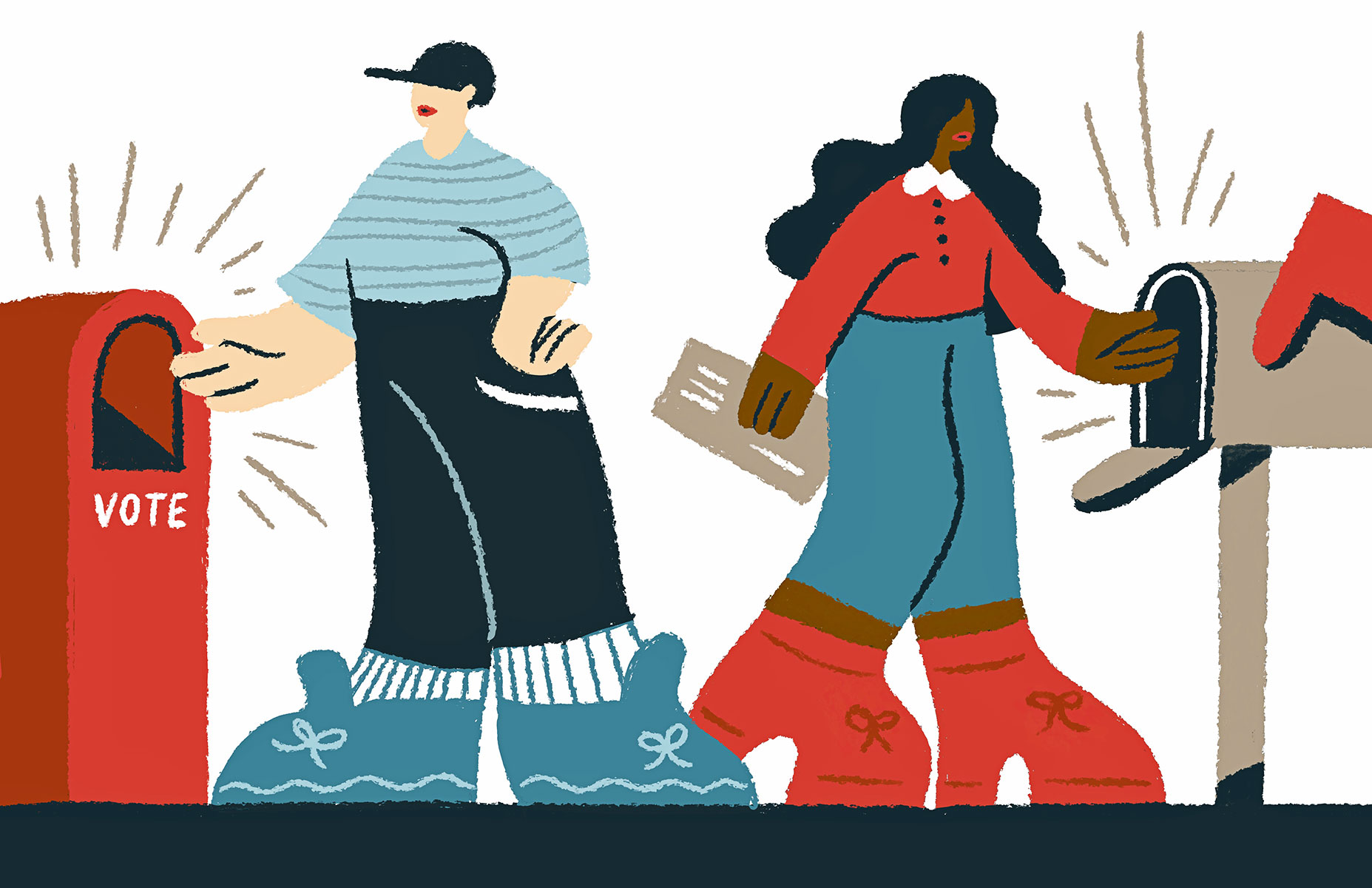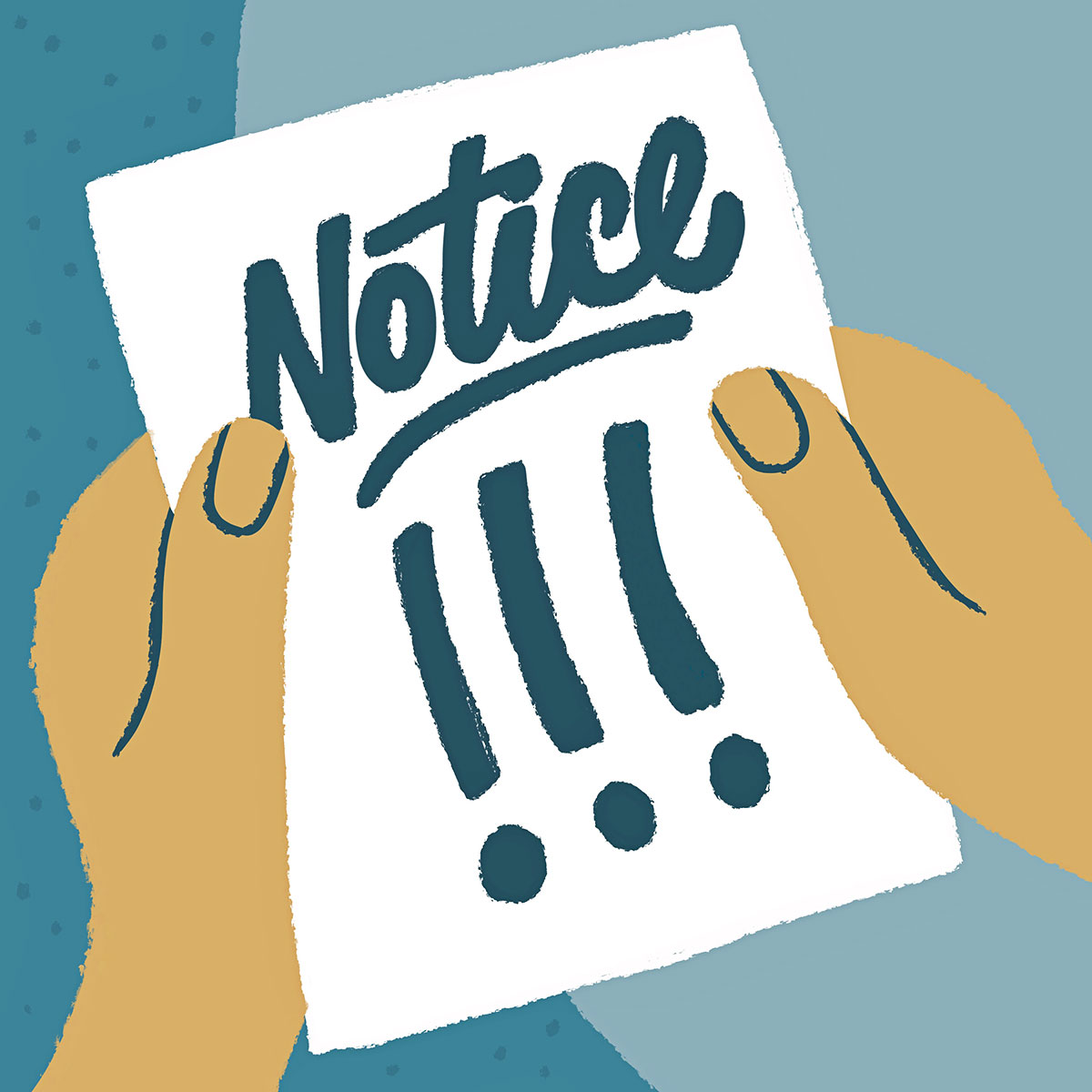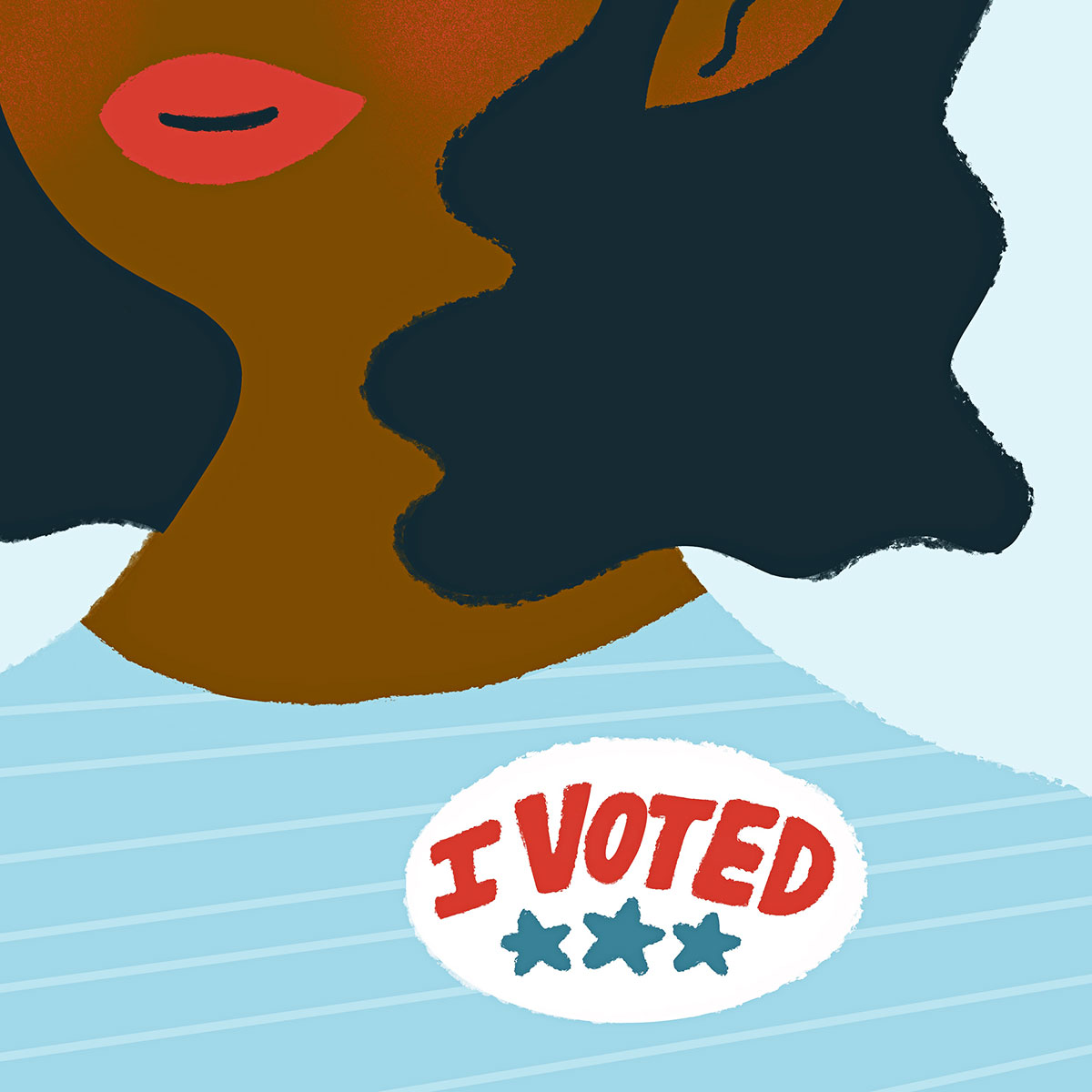
With COVID-19 cases spiking, the President of the United States tweeting false information about voting, and tens of millions of us casting ballots by mail for the first time, it’s already turning out to be a wild and woolly election season. But don’t worry, we’ve got your back. TIME staff has assembled a list of some of your most pressing questions about how to vote in-person and by mail, how to navigate the process amidst a pandemic, and what to do if the unexpected happens in this ever-so-unexpected year.
Everything you need to know about voting in the 2020 election:
Is it better to vote early, or on Election Day?
Can I vote if my voter registration is “inactive”?
What should I do if someone tries to stop me from voting?
Should I use a dropbox instead of mailing my ballot?
How do I know if my mail ballot arrived and was counted?
Will I be notified if my mail-in ballot is rejected? If so, can I fix it?
Why is my ballot so confusing?
What if I planned to vote in person but get sick on Nov. 3?
If I opted to get a mail ballot, can I vote in-person instead?
What if something goes awry at my polling place?
What time should I vote to avoid the longest lines?
Can someone else drop off my ballot for me?
What health precautions should I take to vote in-person?
What if one candidate claims victory before all of the results are in?
Should I be concerned if there’s no clear winner on election night?
Is it better to vote early, or on Election Day?
There is, of course, no single right answer. COVID-19 is impacting everyone’s health, job and support system differently. But if you’ve decided to forgo absentee or voting by mail—or if those are not options for you in your state—here are some factors to consider.
Early voting offers some clear benefits because polling places are often less crowded than they are on Election Day. It’s an easy way to decrease your risk of exposure to COVID-19 while still voting in person. Most states are offering some form of in-person voting before Election Day this year, and many have upped the number of hours and days that polling places are open. Some states have also extended voting to weekends—which is all good news for keeping crowds in check. Early voting also acts as an insurance policy. If something unexpectedly goes wrong on Election Day—your car breaks down, the weather takes a turn—you’ve already banked your ballot.
But there can be hitches. Poll workers may still be getting used to the process have seen long lines form outside polling places in the initial days of early voting, with some voters reporting waits of up to 11 hours. Experts recommend monitoring your local polling site and heading in when the lines are short or the parking lot looks sparse. If you plan to drive to your polling place, the Centers for Disease Control and Prevention (CDC) recommends waiting in your car until the line is shorter to help reduce the spread of infection.
Voting on Election Day is hardly off the table. If you’re on the fence, waiting until the last moment gives you time to make up your mind. Or if you just enjoy the tradition of voting on the first Tuesday in November, that’s fine too. — Abigail Abrams
Can I vote if my voter registration is “inactive”?
Your registration becomes inactive if you haven’t voted in two consecutive federal elections and haven’t replied to requests verifying your address. But most states make it pretty easy to re-up at a polling place— so long as you bring valid ID and, in some places, proof of your address. — Sanya Mansoor

What should I do if someone tries to stop me from voting?
Report it. If you’re at a polling place, flag a poll worker or another official. If you’re elsewhere, notify your state or local election officials. Numbers and email addresses are usually easy to find online.
If you have additional questions or run into problems, call or text 866-OUR-VOTE. The hotline is a nonpartisan resource run by Election Protection, a coalition of voting- access advocacy groups. You can also direct message or chat with a volunteer online.
Keep in mind that voter suppression can take many forms—physical threats, intimidating phone calls and misinformation designed to keep you from casting your ballot. Even if you end up voting, speak up about what happened. Your colleagues and neighbors may be facing similar challenges. — Lissandra Villa

Should I use a dropbox instead of mailing my ballot?
Despite the flurry of recent misinformation about mail-in voting—much of it coming from the President’s Twitter feed—election officials have repeatedly stressed that both delivery methods are safe and reliable.
Each offers pros and cons. If you’re in a rush to have your ballot reach election officials, choose an official drop box. If you deposit your ballot anytime before your state’s deadline, it will be delivered to your local elections office almost immediately. If you live in a state or county that doesn’t offer drop boxes or that offers them on a limited basis, contact your local elections office. Many states offer ballot drop-off locations, open at certain hours of the day.
Mailing a ballot via the U.S. Postal Service usually takes more time, even in the best of circumstances, and in the past few months, delivery has slowed in much of the country. But mailing a ballot is also very convenient and accessible, especially for folks who can’t easily hop in a car.
Check your state’s specific deadlines for mail-in ballots and the day they must be postmarked and received.
If you’re mailing it, election officials recommend that you give yourself a buffer of a week for your ballot to arrive. — Lissandra Villa
How do I know if my mail ballot arrived and was counted?
If you live in Mississippi or Wyoming, you can’t know, unfortunately. But if you live in any other state or the District of Columbia, you have access to a ballot tracker, according to data from the National Vote at Home Institute. Each state’s tracker is a little different, so check with your local elections office for details. — Alana Abramson

Will I be notified if my mail-in ballot is rejected? If so, can I fix it?
It depends on your state. By Nov. 3, more than half the states will have adopted what’s known as a “notice and cure” process, which requires election officials to tell you if your mailed ballot is invalid for some reason—for example, you forgot to sign it or you didn’t use the right envelope. Officials must then give you the opportunity to correct (“cure”) the problem.
Eighteen states had some type of “notice and cure” process in place before COVID-19, and at least 11 more are putting them in place this cycle, according to The Voting Rights Lab. In the 21 states that do not offer a statewide cure process, some counties offer their own systems. Be sure to check with your local elections office to know your options.
Read More: Have a Problem With Your Mail-In Ballot? Advocates Are Pushing States to Let You Correct It
If you live in a state or county with a “notice and cure” process, you should receive an official notice if there’s an issue with your ballot. What that notice looks like depends on the state, and what information is on file. Some states will contact you by phone or email; others will send a letter to your physical address.
How ballots are cured also varies. Some states simply inform voters that their ballots were rejected and ask them to cast a new one. Others ask voters to provide evidence of their identity and sometimes require them to come in person to a local elections office. To be safe, voting- rights advocates recommend casting a ballot as soon as possible to provide plenty of time for any potential problems to be flagged and fixed.
Since most states allow you to track your mail or absentee ballot, advocates recommend regularly checking to see if it has been flagged. If it has, you can call your local elections office directly to see if you can either fix it or throw out that ballot and cast a new one. — Madeleine Carlisle
Why is my ballot so confusing?
Some state ballots feature jarring design choices, like extra-long columns or endless instructions. In most cases, the reason is legal. When designing ballots, election boards are often required to follow state-mandated rules on everything from the font to what languages are included. In many cases, ballots are designed so poorly that they result in people’s votes not being counted: voters skip sections or vote for someone they didn’t intend. With tens of millions of people voting by mail this year, the challenge is even greater. If you vote in person, ballot scanners will often notify you if you make a mistake. If you fill out a mail ballot, you won’t know immediately if you accidentally invalidated your vote. Election experts are particularly concerned this year with the design of a ballot in Gwinnett County, Georgia, the second-most populous county in a battleground state with two contested Senate races: a special election and a normal contest. For the special election, the ballot splits the list of candidates into two columns, which may visually suggest that voters select a candidate in each column. If they do that, their vote won’t count. Ballot design has consequences. Just a few thousand mistakes could swing a tight race. — Tara Law
What if I planned to vote in person but get sick on Nov. 3?
First things first: if you feel sick or have been in close contact with someone who may have COVID-19, you should stay home—even if you’d planned to vote in person. Medical experts say that’s a hard-and-fast rule, and it applies on Election Day too. “The risk of you infecting a poll volunteer or somebody else who’s out there voting is just not worth it,” says Dr. Marybeth Sexton, assistant professor of infectious diseases at Emory University School of Medicine. If you’re worried about falling ill on Nov. 3, or if your job makes it hard to avoid coronavirus exposure, consider casting a vote early or requesting an absentee or mail ballot. Some jurisdictions are offering curbside voting this year, which can reduce contact with others. (But remember that if you’re genuinely ill, you still pose a risk to poll workers and anyone in your car.) If the worst happens and you’re hospitalized or have another medical crisis on Election Day, at least 38 states allow emergency absentee voting. Some states, such as Minnesota and Georgia, will deliver ballots to people in the hospital. If you find yourself in this situation, contact your local elections office; they’ll do everything they can to help you vote. — Abigail Abrams

If I opted to get a mail ballot, can I vote in-person instead?
Yes—anytime, on or before Election Day. Just remember to bring your mail or absentee ballot with you when you go to your polling place. That gives election officials an opportunity to verify that you haven’t voted already. Even if you forget to bring your unused ballot, some states, including California and Illinois, will still allow you to cast a provisional vote. — Sanya Mansoor
Read More: Voting By Mail? Here Are the Deadlines in Every U.S. State

What if something goes awry at my polling place?
News coverage tends to focus on where things have gone wrong—long lines, power outages, broken voting machines. But election experts caution against letting those reports scare you away. In all likelihood, things will go smoothly for you.
And if they don’t, election administrators and volunteer groups are prepared for any number of problems—from polls failing to open to dysfunctional voting machines. “State and local election officials have contingency plans,” says Sarah Brannon, managing attorney for the ACLU Voting Rights Project.
What specific preparations are being made depends on your state and region. In most parts of Florida, for example, election officials are ready for hurricanes. “We’re kind of already in that mood of always having to prepare for stuff,” said Chris Anderson, the Republican supervisor of elections in Seminole County, Florida. In Northern states, election officials keep an eye out for blizzards and road closures, and election administrators in various states have prepared contingency plans in case an election needs to be conducted in the wake of a terrorist attack.
This year, local officials and attorneys general are collaborating with police on how to handle large-scale protests or gatherings of overzealous supporters that threaten to disrupt the polls. If you run into problems at your own polling place, reach out to your local elections office, which will direct voters to a backup polling place or provide information about alternative ways to cast a vote. —Lissandra Villa and W.J. Hennigan

What time should I vote to avoid the longest lines?
Most people vote before work, during their lunch break or immediately after work. So if you have any flexibility in your schedule, try to avoid those windows. The off-peak hours are generally very early in the morning—some polling places open at 6 a.m.—late morning and mid-afternoon. — Mariah Espada
Can someone else drop off my ballot for me?
It depends on your state. Permanent laws in 26 states allow voters to designate someone else—a spouse, neighbor, caregiver, etc.—to return a ballot on their behalf, according to the National Conference of State Legislatures (NCSL). Some states have stricter rules. In Arkansas, for example, if you plan to return someone else’s ballot, you must deliver it directly to a county clerk, sign an oath and show appropriate identification, per the NCSL. In Alabama, voters must mail or return their own ballots, with only very narrow exceptions for medical emergencies. Many states have laws designed to prevent mass ballot collection, known pejoratively as “ballot harvesting,” which is when one person collects and returns multiple ballots. — Alana Abramson
What health precautions should I take to vote in-person?
With so much attention voting by mail this year, you might be wondering whether it’s even safe to vote in person. Medical experts say the level of risk depends on your personal health, the amount of COVID-19 transmission in your community, and your ability—and willingness—to follow safety precautions at the polls.
If you’re in a group that’s at high risk for severe illness from COVID-19, think about alternative options like voting by mail or curbside voting. But for low-risk people who want to vote in person, experts say it can be done safely. (Even Dr. Anthony Fauci said he plans to go in person to the polls, provided his busy schedule allows.)
If you too want to vote in person, start taking precautions now. “We should really focus on trying to drive down transmission in our communities ahead of time so that people can vote safely,” says Dr. Sexton of Emory. That means that in the days before you plan to cast a vote, you should be extra vigilant in practicing good hand hygiene, wearing a mask that covers your mouth and nose when you’re in public, staying 6 ft. away from people not in your household and refraining from attending large social gatherings. You should also consider getting a flu shot before you vote, Sexton says.
You’ll also probably want to make a voting plan. Try to go at off-peak times or during the early-voting period if your state has one. Check out the precautions your polling station has added so you know what to expect. Complete any registration forms ahead of time and bring all necessary documents to avoid delays. You can also practice filling out a sample ballot to shorten the time you spend inside.
When it’s time to vote, choose a mask that has multiple layers and fits comfortably over your nose and mouth so that you’re not tempted to touch your face to adjust it. The mask should stay on while you’re waiting to vote and the entire time you’re inside your polling place. Bring your own pen, tissues and hand sanitizer with at least 60% alcohol—and douse your hands before and after touching any voting equipment or shared surfaces, like clipboards or doorknobs. (Just don’t use sanitizer directly on a voting machine, as some electronic equipment can be damaged by disinfectants.)
The CDC also recommends not bringing children or other nonvoters, although it can be tricky to find babysitters or other caretakers, so plan ahead.
And of course, the golden rule of COVID-19: try to maintain 6 ft. of distance from other people at all times. “If you did all of those things, and you successfully distanced and everybody in the polling place was masked, you should not have had an exposure to COVID,” says Sexton. Still, if you start feeling symptoms afterward, isolate and get tested. — Abigail Abrams

What if one candidate claims victory before all of the votes are in?
Such a claim would be legally meaningless—even if the candidate is also the President of the United States. Each state’s election results must be certified by state election officials, and the results of the Electoral College must be confirmed by the
U.S. Congress before they’re official. To combat premature Election Day proclamations, consider ignoring social media and tuning out partisan outlets for 24 hours. If a candidate’s claim of victory does not match up with what state election officials or nonpartisan outlets like the Associated Press are reporting, sit back and wait. — Alana Abramson
Should I be concerned if there’s no clear winner on election night?
Nov. 3 may feel like the final minute of a contentious championship game, but just because the clock will stop doesn’t mean we’ll know who won. The chance that Election Night passes without a clear winner is higher than normal this year.
First, the good news. There are a series of deadlines carved into America’s electoral process that are designed to ensure a victor is determined before Inauguration Day on Jan. 20. By Dec. 8, states should have counted their votes and resolved court contests. Failing to meet that deadline risks Congress getting involved in disputes over the state’s chosen Electoral College members. On Dec. 14, the 538 electors convene in their states to cast their ballots. Missing this hard deadline could mean the state’s votes are not included in the tally toward 270 electoral votes, the number needed to win the White House. On Dec. 23, states are required to send these votes to Congress. On Jan. 6, the newly sworn in Congress is expected to count and certify the Electoral College votes and verify a victor.
Read More: What You Need to Know About Election Day’s Most Likely Scenarios
And now for the bad news. Many election experts are concerned that states will be unable to meet some of these deadlines. As confirmed COVID-19 cases spike around the country, tens of millions of voters are opting to cast ballots by mail—which can take longer to tally. This slowdown, paired with the GOP’s legal attacks on voting by mail, raises the question of whether some states will be able to finish counting and certifying ballots in the 35 days between Nov. 3 and Dec. 8.
The way some of this year’s pandemic-era primaries unfolded isn’t exactly reassuring: in five states, election officials took more than nine days to call the winners; two congressional primaries in New York took six weeks. Patience may be paramount. — Abby Vesoulis
More Must-Reads from TIME
- Where Trump 2.0 Will Differ From 1.0
- How Elon Musk Became a Kingmaker
- The Power—And Limits—of Peer Support
- The 100 Must-Read Books of 2024
- Column: If Optimism Feels Ridiculous Now, Try Hope
- The Future of Climate Action Is Trade Policy
- FX’s Say Nothing Is the Must-Watch Political Thriller of 2024
- Merle Bombardieri Is Helping People Make the Baby Decision
Contact us at letters@time.com
